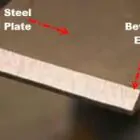How to learn to weld? For many people, this can feel like a battle: it’s hot and hard as can be. But can the subject of welder training be talked about in a way that is less stressful and safer? Is it possible to improve the quality of training and cut costs at the same time? Welding simulators are a good alternative that could be used instead.
They are like flight simulators for people who want to become pilots, but they are used to train welders. At a terminal, training takes place with 3D glasses and real-looking welding torches and workpieces. Virtually, people can learn how to do different kinds of welding, such as TIG, MIG/MAG, or MMA welding. There’s no noise, smoke, heat, or use of materials, so there’s no way to get hurt, and it’s very easy to use the torch without being scared.
Also, welding simulators give the user theoretical knowledge about the different ways to weld and test this knowledge. Students are more likely to have fun competing with each other when they have a ranking list.
Virtual Welding is available in more than 20 languages and in two different types (StandUp terminal and Mobile Case). You can learn how to use MIG/MAG, TIG, MMA, and MIG/MAG Robotics.
Use the virtual teacher to learn how to weld
The practical welding tasks done on the simulator should be based on professional training content, like the curriculum of the International Institute of Welding (IIW), so that they meet the international standard for welder training. A virtual teacher helps students learn skills and gives them feedback right away.
This means that people learning how to weld can take on increasingly hard tasks until they can weld without help in a realistic simulation mode. By keeping track of the results in a systematic way, they can be analysed later with the trainer. This makes it easier than ever to learn how to weld.
At a glance, here are the pros of virtual welding simulation:
No noise.
No smoke.
There’s no heat.
Nothing was used
With Virtual Welding, people who want to learn how to weld can do a lot of their training on their own. So, trainees learn the basic information and skills they need before they can work with a real welding system. So, welding simulators can help training organizations and people who teach welding improve the quality of their training. When you stop spending money on materials and energy, you save a lot of money at the same time.
A field study shows that the welding simulator is useful
A field study at the Fohnsdorf Training Center, which is one of the most modern and innovative places in Austria to learn a trade, has now also confirmed this. Since 2010, Fohnsdorf’s metalworking department has used Virtual Welding. Now, 30% of practical welder training is done on the simulator.
Study how to weld
The training centre looked at the effects of this by keeping track of how much metal, gas, welding wire, and energy 13 trainees used over the course of two weeks. The amount of time the trainees actually spent welding was also compared, and the results were clear: virtual welding was better.
Welding simulators make training more effective and save money
But is it even possible to make a big difference in how well things work? Based on an analysis of 1,577 real weld seams and 1,733 virtual weld seams, virtual training has made it take trainees at Fohnsdorf 23% longer to do real welding. On the simulator, there is no need to cool the test sheets or clean the seams of the welds, which can take a lot of time.
This meant that the trainees could weld three times as many seams in the same amount of time as they could on a real welding system. The virtual trainer also gives each trainee one-on-one help and visual feedback in real time. All of this leads to a much higher level of training quality in the end.





